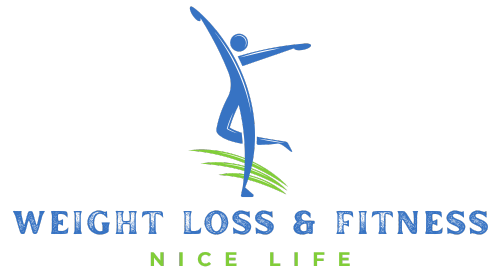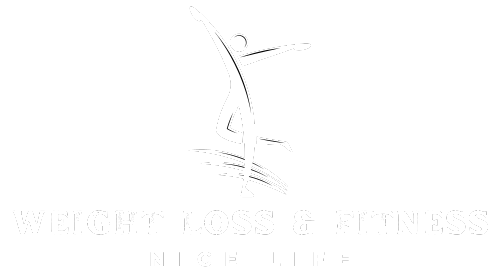When it comes to adopting a healthy lifestyle, we often find ourselves overwhelmed by the notion of making drastic changes.
However, it’s important to remember that even small adjustments made consistently can lead to significant results over time.
Today, let’s shift our focus away from nutrition and address one of the biggest misconceptions in the fitness industry, second only to the myth that “sit-ups will help you burn belly fat.”
Before we delve into the rationale behind this unconventional approach, let’s take a moment to understand how our beliefs about fitness have evolved over time.
Through the ages, a story has circulated that women should steer clear of weightlifting.
According to this tale, women who dare touch heavy weights would magically transform into hulking masses of muscle, resembling the Incredible Hulk with flowing hair and a fashionable skirt replacing his iconic purple pants.
While the details of this story may have undergone some changes over the years, the underlying message remains the same: women should avoid lifting weights.
This mainstream belief suggests that weight loss can only be achieved through cardiovascular training, such as using the treadmill, and that weightlifting is exclusively for bulking up.
Here lies my disagreement with this approach, and if you’ve followed my blog in the past, you know where I stand on long, slow cardio.
Simply stepping on a treadmill and maintaining a leisurely pace while watching the latest episode of a TV show won’t deliver the desired results.
Research has consistently shown that interval-based training, characterized by short bursts of high intensity followed by a recovery period, is far more effective for weight loss and overall health.
One study compared women who alternated 8 seconds of sprinting on a bike with 12 seconds of light exercise for 20 minutes, three times a week, to women who exercised continuously at a regular pace for 40 minutes.
After 15 weeks, the group following the alternating routine had lost three times as much fat as the other group.
Numerous studies have produced similar findings, yet I observe women every day mindlessly running on the treadmill until they can no longer endure it.
If you insist on using the treadmill, at least do it the right way: incorporate short bursts of sprinting followed by longer recovery phases.
This approach will halve your workout time while yielding superior results.
Just as weightlifting stimulates muscle growth and boosts metabolism, short bursts of speed work on the treadmill provide similar benefits.
Consider the physical differences between a long-distance runner and a sprinter.
Although these are extremes on either end of the spectrum, the principle applies to the average person as well.
Now, let’s return to the ongoing debate surrounding weightlifting. Here are some of the most common myths associated with this form of exercise:
1.”I don’t want to look like a bodybuilder.” Many women associate weight training with the muscular physiques of female bodybuilders depicted in magazines and competitions.
However, there’s a crucial distinction to be made: women naturally produce significantly less testosterone than men, which means they won’t develop bulging pecs without the aid of supplements and an extreme regimen.
The average woman will never come close to achieving that level of muscle mass.
2. “I want to lose weight, so I’ll stick to cardio.” It’s essential to recognize the role of lean body mass—muscle mass beneath body fat—in burning calories around the clock.
Muscles demand a considerable amount of energy to function, and this energy is derived from the calories you consume. Thus, the more muscle you have, the more calories and energy you burn.
Engaging in long cardio sessions can actually break down your existing muscle, as your body begins to utilize it for energy, leading to a decreased energy requirement and fewer calories burned overall.
3.”I just want to tone, so I’ll use light weights and high repetitions.” First, let’s clarify what “toning” means.
Most women use this term to describe having healthy muscle definition without appearing bulky.
Achieving this requires losing the fat surrounding the muscle and increasing the muscle’s size to enhance its shape and definition. And guess what? That’s precisely what was mentioned earlier.
Unfortunately, picking up those tiny 2 lb weights and performing endless bicep curls won’t help you accomplish this goal.
Light weights with high repetitions primarily activate slow fatigue, endurance muscles necessary for sports focused on endurance.
Muscle growth and shaping, on the other hand, stem from fast fatigue or “power” generating muscle fibers that are stimulated through short bursts of weightlifting activities.
Once again, think of the distinction between marathon runners and sprinters. The former trains for long-distance activities that require hours of repetitive movements, while the latter focuses on short, intense bursts of speed.
My advice is to break free from your reliance on the treadmill and give weightlifting a try. It will provide more value for your efforts!
If you’re concerned about transforming overnight into the female version of the Hulk, rest assured that it only happens when individuals devote hours each day to weight training and spend a fortune on supplements.
Achieving the physique of female bodybuilders requires extreme dedication and comprehensive lifestyle changes.
Most women aspire to look healthy and strong, resembling the image of female athletes like the goalkeeper for the US women’s national team.
Unfortunately, following the conventional approach to exercise won’t lead to that outcome.
It’s time to think outside the box—or in this case, outside the treadmill—and embrace a new perspective.













No Comments